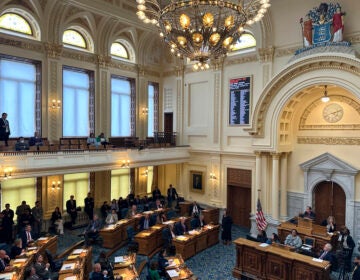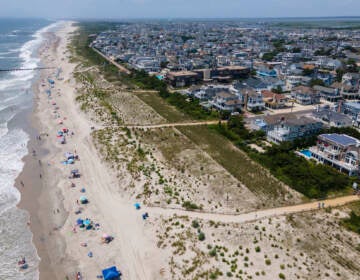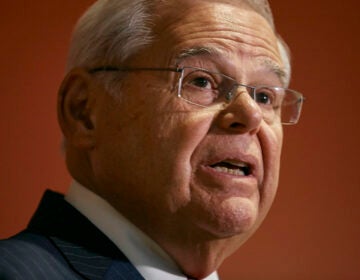Annual Electricity Auction Helps Determine Rates Charged by NJ Utilities
For the past four years, consumers and many businesses in New Jersey have enjoyed a rare occurrence — a drop in the price of the electricity delivered to their homes from power plants around the region.
Might the trend continue? More will be known by the end of next week when the state Board of Public Utilities holds its annual online auction to purchase most of the electricity needed to power millions of New Jersey homes and businesses.
The results of the annual auction play a big role in determining whether electricity prices fall or rise each June in a state saddled with some of the highest energy costs in the nation.
But in the increasingly complex energy market, the auction is not the only factor: Transmission prices continue to rise and the state has increased the amount of electricity that power suppliers are required to buy from solar-energy systems, which costs more than electricity produced from more conventional power sources. Those and other factors can wipe out any savings achieved in the auction.
The auction typically involves the expenditure of more than $7 billion in ratepayer funds, although that amount may drop given the number of customers who have switched in the last year.
For the most part, state officials and industry executives were reluctant to predict the outcome of this year’s auction, but the general consensus was there should not be a drastic change in consumer prices, given the continued relatively low cost of natural gas.
”I don’t think there will be any major swings,” said Jay Kooper, the New Jersey chairman of the Retail Energy Suppliers Association, a group representing power suppliers who try to offer customers cheaper electricity than that supplied by the state’s four electric utilities.
With the steep drop in natural-gas prices, Kooper’s members have been much more successful in luring customers away from the state’s utilities, which buy the power they need to supply their customers in bulk in the annual auction held by the BPU. The cost of generating that electricity generally amounts to about two-thirds of a customer’s bill, with most of the rest of the cost tied to the expense of delivering the power over a utility’s transmission and distribution lines.
Natural-gas prices are still historically low, but they have bumped up a bit since last year, according to Tancred Lidderdale, a senior analyst at the Energy Information Administration, an arm of the U.S. Energy Department.
“Natural gas prices are still low, but they are not as low as last year,” Lidderdale said, noting that the price of the fuel, which is largely used to power generating stations in the region, was about $2.40 last January in one sector; prices were running at about $3.29 in future contracts in the same sector this month.
The price differential should not have a big impact on the New Jersey auction because of the way state regulators have structured it. Last year, prices for electricity purchased from the power suppliers fell from 1.1 percent to as much as 6.4 percent, depending upon the utility supplying the electricity.
Critics, however, said the price drops could have been steeper if the state’s utilities were not locked into the present system of buying electricity. Under that system, the utilities buy one-third of the power they need for customers each February. By doing so, they avoid the possibility of their customers be hit with huge price spikes when natural-gas costs rise rapidly, as happened during Hurricane Katrina.
The downside is that when natural-gas prices fall, customers do not gain the savings very quickly from their utilities, which has prompted more and more customers to shop around for cheaper energy rates. By the end of December, about 15 percent of more than 3 million residential customers had switched electricity suppliers, way up from the 5 percent who had switched in February.
New Jersey Division of Rate Counsel Director Stefanie Brand, who has argued for changes in the current auction structure, said the lower natural-gas prices may offset other factors driving up costs for consumers.
“Hopefully, it will be good news for consumers,” Brand said in a telephone interview. “I would love to see prices go down, but I can’t say I know what’s going to happen.”
Hal Bozarth, director of the Chemistry Industry Council of New Jersey and a frequent critic of the state’s energy policies, said he would expect prices to go down, given the low natural-gas prices. “I’d be sadly disappointed to see prices go higher,” he said. “The rates are so high they are a disincentive for economic development.”
In New Jersey, energy costs for the industrial sector usually rate as sixth- or seventh-highest in the country, about 60 percent higher than the national average, according to Bozarth.
Kooper, who said the state’s system of buying power needs some structural changes, remained hopeful. “I think there will be opportunities to shop for electricity,” he said.
NJ Spotlight, an independent online news service on issues critical to New Jersey, makes its in-depth reporting available to NewsWorks. Energy and environment writer Tom Johnson is co-founder of NJ Spotlight and a journalist with 34 years of experience in reporting and editing at New Jersey newspapers.
WHYY is your source for fact-based, in-depth journalism and information. As a nonprofit organization, we rely on financial support from readers like you. Please give today.




